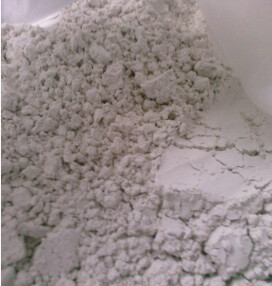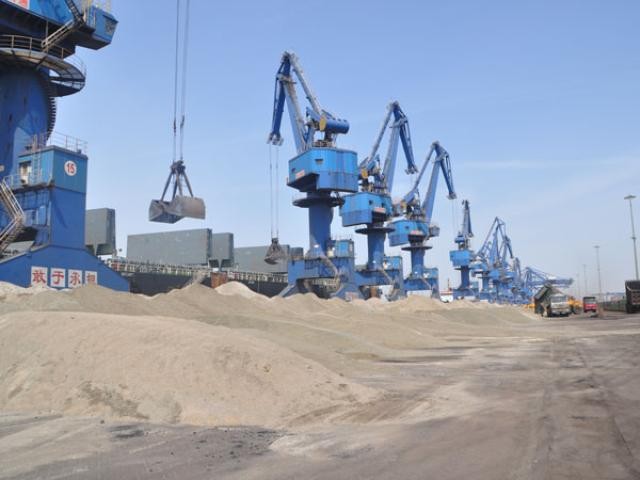Granulated Blast Furnace Slag Flour (GGBFS) is a finely ground material derived from the granular by-product of the blast furnace ironmaking process. When iron is produced, impurities in the molten ore form a liquid slag. This slag, rich in silica, alumina, and calcium, is rapidly cooled by quenching with water or air to form a glassy granular material. The granules are then dried and ground into a fine powder called GGBFS. Its unique properties allow it to be used as a supplemental cementitious material, combining with silicate cement to improve strength, durability, and sustainability in construction applications.

Production Process and Characteristics
The production of GGBFS starts in the blast furnace, where the molten iron is separated from the impurities. These impurities float to the surface, forming a slag. Maintaining its glassy structure and reactivity, the molten slag is rapidly cooled by a process called granulation. The cooled particles are then ground into a fine powder with specific properties to meet construction standards. The chemical composition of GGBFS is rich in silicates and calcium, which helps it react with water and calcium hydroxide to form a durable, cement-like compound. Its physical properties, including its fine particle size and smooth texture, also improve the compatibility of concrete mixtures.
Grades and Industry Standards of GGBFS
GGBFS is categorized into three main classes - Class 80, Class 100, and Class 120 - based on its reactivity and performance in concrete. These classifications are defined by ASTM C989 in the U.S. and CSA A3001 in Canada, ensuring consistency and reliability between applications.
1.Grade 80
Applications:Grade 80 is the least reactive and is typically used in applications requiring lower intensity development.
Performance:Suitable for mass concrete structures such as dams, where the reduction in heat of hydration minimizes thermal cracking.
2.Grade 100
Applications:Grade 100 is moderately reactive and is suitable for general purpose concrete and cement systems.
Performance:Balances strength and durability, making it a versatile choice for a variety of construction projects.
3.Grade 120
Applications:The most reactive grade, Grade 120, is used for high-performance concrete where early strength and superior durability are critical.
Performance:Excellent resistance to corrosive environments such as marine structures and wastewater treatment plants.
The Role of GGBFS in Modern Architecture
GGBFS is transforming the construction industry by addressing key challenges such as durability, sustainability, and cost-effectiveness. Its incorporation into concrete reduces the permeability of the material and increases resistance to aggressive substances such as sulfates, chlorides, and alkali-silica reactions. Structures exposed to marine environments or industrial chemicals can benefit greatly from these properties.
In terms of sustainability, GGBFS helps to reduce the carbon footprint of buildings. By partially replacing Portland cement in concrete, GGBFS reduces the need for energy-intensive clinker production, a major contributor to CO2 emissions. In addition, its use promotes the recycling of industrial by-products, diverts waste sludge from landfills and contributes to the circular economy.
From a performance standpoint, GGBFS helps increase the long-term strength of concrete while improving its compatibility. The finer particle size of GGBFS allows for better mixing of the concrete mixture, creating a smoother consistency and easier placement. Also, its lower heat of hydration makes it ideal for mass pouring, reducing the risk of thermal cracking in large structures such as dams and bridges.
Applications in Architectural Industry
The versatility of GGBFS makes it suitable for a wide range of construction applications. In blended cements, it improves the mechanical and chemical properties of the final product, providing increased strength and durability. Ready-mix concrete manufacturers often use GGBFS to produce high-quality concrete for infrastructure projects, residential buildings, and industrial facilities.
Precast concrete elements, such as beams, panels, and columns, also benefit from GGBFS because it improves surface finish and reduces porosity. In marine construction, it resists chloride intrusion and sulfate attack, ensuring the longevity of structures such as bridge piers, seawalls, and offshore platforms. In addition, GGBFS plays a vital role in soil stabilization projects, where it helps to increase bearing capacity and minimize settlement.

Meets ASTM C989 and CSA A3001 Standards
Quality assurance is critical in the construction industry, and GGBFS is no exception. The ASTM C989 standard defines the performance requirements for GGBFS based on its slag activity index, which measures its contribution to the strength of hydraulic cement mortars. Similarly, CSA A3001 establishes chemical and physical benchmarks to ensure that GGBFS meets the needs of different applications while maintaining environmental and structural integrity.
Environmental benefits of GGBFS
The environmental benefits of GGBFS are a key driver for its adoption in the construction industry. As a recycled by-product of iron production, GGBFS reduces industrial waste and conserves natural resources. Its use in cement production reduces the energy consumption and CO2 emissions associated with clinker manufacturing, making it a key component of green building initiatives.
Furthermore, GGBFS helps to improve the durability of concrete, extending the life of the structure and reducing the need for frequent repairs or replacement. This not only saves materials, but also minimizes the long-term environmental impact of construction.